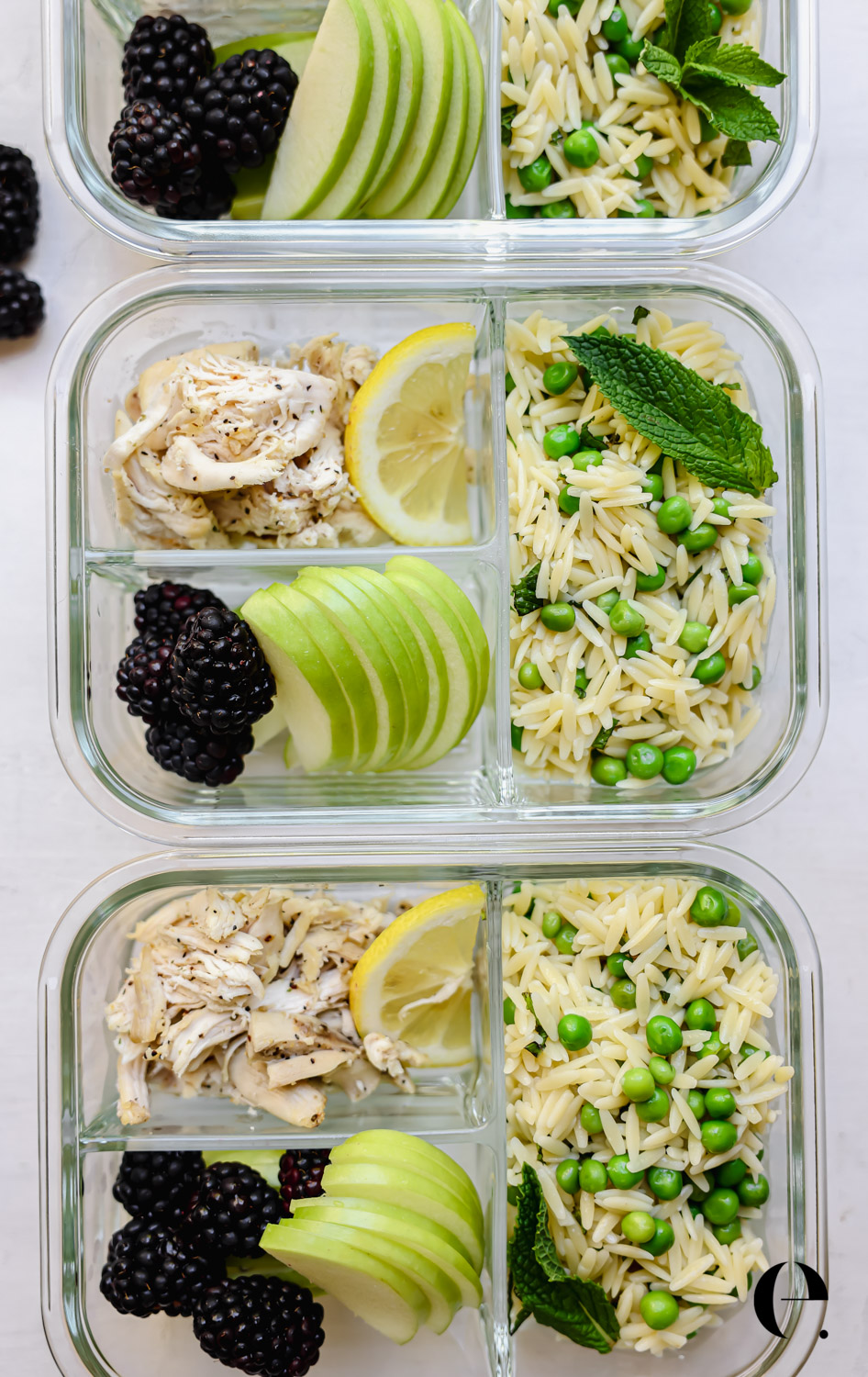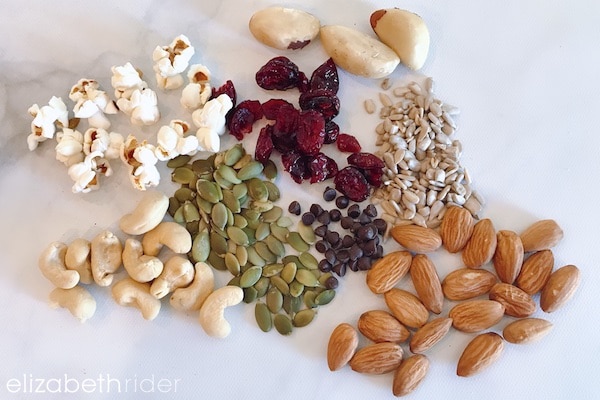One of the most common reasons I hear when someone says they can’t seem to eat healthier is,
“Fresh food is just too expensive.”
And listen—I get it. It’s 2025, the markets are wild, and food prices are only going up. That’s not changing anytime soon. But here’s the good news: eating well doesn’t have to break the bank.
While it’s true that certain trendy stores and restaurants mark up fancy ingredients, the real truth is this: with a few smart strategies, you can absolutely eat healthy and stick to a budget.
Here are twelve easy, practical ways to keep both your body and your bank account in good shape:
1. Eat in season.
Ok ok, you’ve probably been told this before, but it’s too good to skip.
Instead of finding a recipe first and then hunting down the ingredients, flip it around: shop for in-season produce and build your meals around what’s fresh and affordable.
Seasonal foods are typically featured front and center at your grocery store with signage highlighting the deals. Think blueberries in May (cheap and bursting with flavor) versus December (expensive and flown in from who knows where). Pomegranates? Amazing in November. Pricey in April. Check out these seasonal posts to learn more about eating in season.

If you’re not sure what’s in season, ask the produce manager or check out your local farmers’ market—bonus: they usually have the freshest picks and you’ll be supporting local growers.
Pro tip: In-season produce is not only more affordable, it’s also fresher, more nutrient-dense, and tastes way better.
2. Cook Once, Eat 2-3 Times
Batch preparing saves time, money, and stress. This is slightly different than meal prep (which is also great, too).
Think of leftovers as bonus meals, not boring reruns.
First, try a tweak: With a few simple tweaks—like adding a new sauce, tossing in fresh herbs, wrapping it in a tortilla, or serving it over greens—you can turn yesterday’s dinner into an entirely new meal.
Next, be smart about what you save: a quinoa salad or roasted potatoes hold up beautifully in the fridge, while shredded cabbage or dressed greens can get soggy fast. Cooked grains, roasted veggies, soups, and stews are usually safe bets for leftovers. Just store them in airtight containers and aim to eat within 2–3 days.
Try storing leftovers in clear containers so you can see what’s available (or try this hack for saving room in your freezer), and dedicate one or two nights a week to “clean out the fridge” meals to make sure nothing goes to waste.
It’s always good to make a double batch of soup, roasted veggies, or overnight oats and repurpose them in different ways throughout the week. Another way to cook once, eat twice is to use an ingredient for a totally different meal a day or two later. If you make rice, save some plain rice and make some “Unfried” Fried Rice the next day.
Also, remember that roasted veggies can be folded into tacos, tossed into a salad, or added to scrambled eggs; leftover grains can become the base of a stir-fry or grain bowl, and leftover taco ingredients can be turned into a burrito bowl the next day. It’s a low-effort way to always have something nourishing on hand, especially on busy days.

3. Get Creative with Pantry Staples
Having a well-stocked pantry makes it so much easier to pull together a healthy meal without a last-minute store run.
Dried or canned beans, lentils, oats, rice, canned tomatoes, and pasta are inexpensive, shelf-stable, and versatile.
My High-Protein Tuna Chickpea Salad is also a great example of how to turn pantry staples into a delicious meal.
You can turn those basics into soups, stews, stir-fries, grain bowls, or even quick breakfast bakes.
Keep your pantry stocked and you’ll always have a healthy foundation to build on.
4. Shop with a List (and Eat Before You Go)
This one’s simple but makes a big difference. Going to the store hungry is a recipe for impulse buys—and those add up fast.
Plan your meals, make a list, and stick to it. Shopping with a list helps you avoid buying things you don’t need and keeps your grocery budget focused on the essentials.
5. Enjoy Frozen Fruits & Veggies
Frozen fruits and vegetables are often just as nutritious as fresh, and they’re usually more affordable—especially out of season.
I love frozen berries in a quick stovetop chia seed jam to spoon over plain Greek yogurt. Frozen fruits and veggies are also great for smoothies, soups, stir-fries, and quick side dishes.

6. Avoid Single-Serving Anything
Snack packs, mini yogurts, and pre-cut produce might seem convenient, but they usually come with a hefty markup. You’re often paying double just for the packaging.
Buy the full-size version and portion things out yourself. You’ll save money, cut down on waste, and still have grab-and-go options when you need them.

7. Try Meal Prep Sunday
If there’s one habit that can seriously stretch your food budget and save your sanity, it’s meal prepping on Sundays (or whatever day of the week works for you).
Taking just an hour or two to roast veggies, cook a pot of grains or lentils, and prep a simple protein gives you a head start for the week. Think mix-and-match: roasted sweet potatoes, quinoa, and sautéed greens can become grain bowls, tacos, or breakfast hashes depending on how you season and serve them.
See: 45 Ideas for Healthy Meal Prep
8. Make Your Own Snacks
Pre-packaged snacks can get expensive fast—and many are loaded with sugar, sodium, or questionable oils.
Try making a few things at home instead: granola, trail mix, hummus, roasted chickpeas, or homemade energy bites are all easy to prep and usually cost less than store-bought versions. We also love air-popped popcorn in this old-school air-popper—unpopped popcorn is cheap, super easy to pop, and WAY healthier than the stuff in bags.
Even better, you get to control the ingredients, which means better flavor and better nutrition.

9. Buy in Bulk (Smartly!)
Warehouse stores like Costco are great for bulk buys, but even traditional grocery stores offer 10% off when you buy a full case of something—and that often includes sale items.
I stock up on canned tomatoes and my favorite protein bars when they’re on special and get it for way less per can or bar. The bulk bins at natural grocery stores are another great way to save—especially if you only need a small amount of something like a spice, grain, or flour.
Just make sure you’re buying items you’ll actually use before they expire. (It’s not a deal if you don’t use it!)
10. Grow Your Own (yes, even in a tiny kitchen)
You don’t need a full garden to grow your own food. Herbs like basil, mint, and scallions do great on a sunny windowsill and cost just a few dollars to start.
I keep mint and basil growing from spring to fall—just water regularly and don’t harvest more than half at a time.
You can also regrow scallions by saving the white ends and placing them in water. If you have a bit more space, consider a few container garden veggies like cherry tomatoes or lettuce—it’s a fun and rewarding way to save money.
11. Go meat-free once a week
Even if you’re not vegetarian, taking a break from meat just one day a week can cut your grocery bill significantly.
Animal protein is usually the most expensive item in your cart. A hearty plant-based meal like lentil soup, black bean tacos, or a veggie curry costs much less and still delivers on flavor and nutrition. Plus, it’s a great way to get more fiber and micronutrients into your diet.
12. Skip fast food—it’s not the bargain you think
Sure, a $3.99 value meal looks cheap, but over time it can take a serious toll on your health (and lead to expensive doctor visits down the road).
Cooking at home with real, whole ingredients is not only more affordable in the long run—it’s better for your energy, digestion, and overall wellness.
Think of high-quality food as an investment in your future, not a splurge.
www.elizabethrider.com (Article Sourced Website)
#Practical #Ways #Eat #Healthy #Budget #Elizabeth #Rider
